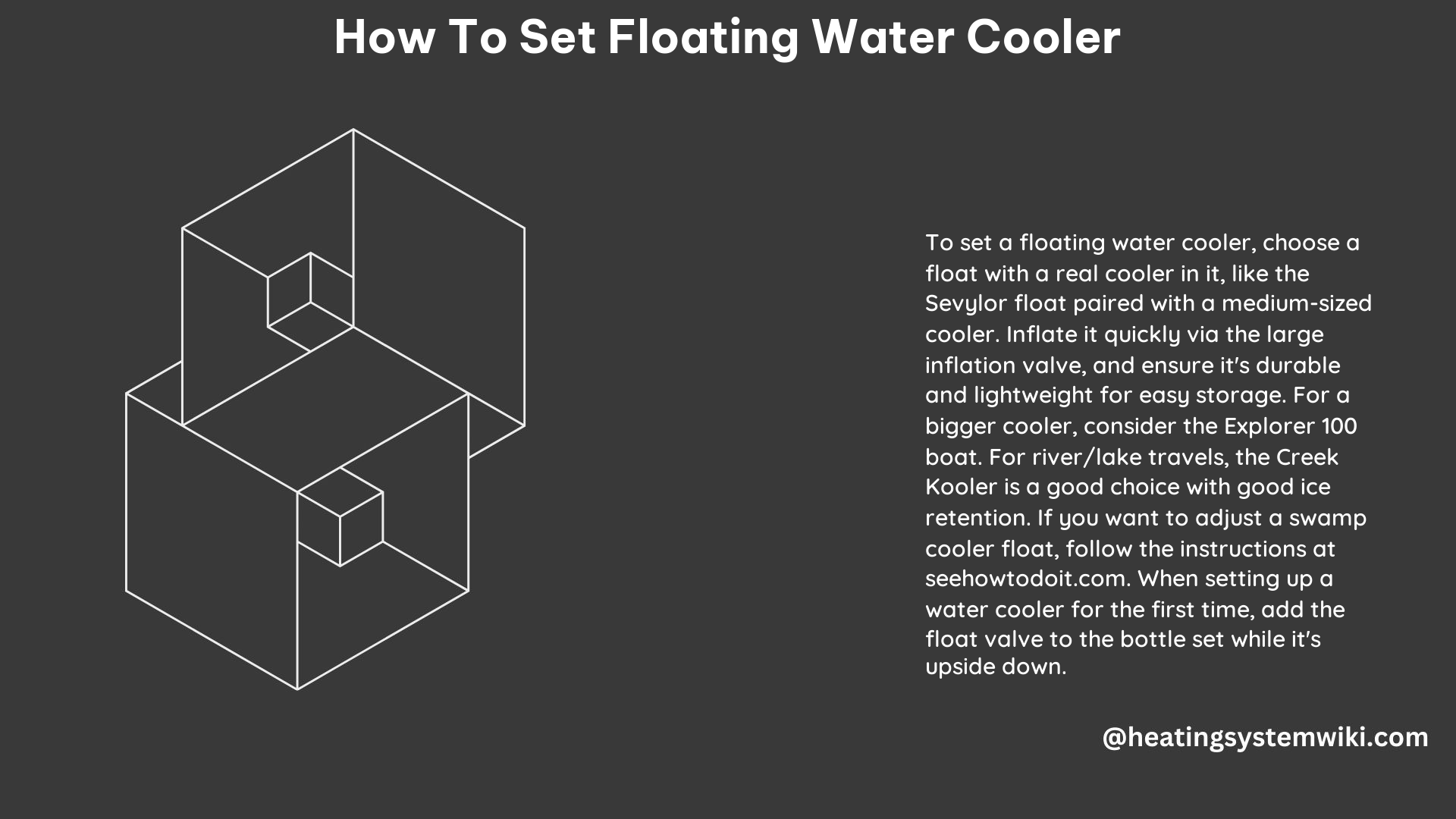Setting up a floating water cooler requires precise adjustments to the float valve to ensure efficient water level control. This comprehensive guide will walk you through the step-by-step process of properly adjusting the float valve and paddle arm to achieve optimal performance.
Understanding the Float Valve and Paddle Arm
The float valve is the key component responsible for regulating the water level in a floating water cooler. The paddle arm, which is attached to the float valve, plays a crucial role in this process. The paddle arm’s angle and position relative to the water line determine the effectiveness of the float valve’s operation.
Adjusting the Float Valve

Step 1: Locate the Float Valve and Paddle Arm
The first step is to identify the float valve and the paddle arm attached to it. This is typically located at the top or side of the water cooler, depending on the model.
Step 2: Check the Water Level
Ensure that the water level in the cooler is at the desired level. The paddle should be flat on the water line, as this provides the most leverage and force against the float valve.
Step 3: Adjust the Paddle Arm Angle
If the paddle is not flat on the water line, you’ll need to adjust the angle of the paddle arm. To do this, unscrew the paddle arm from the float valve. Gently bend the arm to correct the angle of the float paddle where it contacts the water. This will give the float valve the most leverage and force, allowing it to open and close more efficiently.
Step 4: Reattach the Paddle Arm
Once you’ve adjusted the angle of the paddle arm, screw it back onto the float valve.
Step 5: Test the Water Level
Add or remove water from the cooler to test the float valve’s operation. Observe how the float valve opens and closes as the water level changes. Ideally, you should only need a 1/2-inch drop in water level to trigger the float valve to open at a higher GPM rate, and a 1/2-inch rise to close the valve completely.
Troubleshooting Common Issues
Paddle Bent Down into the Water
If the paddle is bent down into the water, you can still adjust the arm to get the float valve to close. However, the progression of the leverage against the valve will be increased, and there will be less float arm travel as the water drops when the pump starts.
Improper Adjustment
When the float valve is improperly adjusted, the arm may drop, and the valve will not open as far, causing limited GPM water flow. This can even lead to the water level reaching the lower section of the pump, causing starvation until the water level rises and the pump can prime.
Maintaining Optimal Performance
To ensure your floating water cooler continues to operate efficiently, it’s essential to regularly check and adjust the float valve as needed. Seasonal changes in temperature and humidity can affect the water level, requiring periodic adjustments to the paddle arm.
Conclusion
Setting up a floating water cooler requires a thorough understanding of the float valve and paddle arm mechanics. By following the steps outlined in this comprehensive guide, you can ensure your cooler operates at its best, providing adequate water flow and preventing pump starvation. Remember to regularly monitor and adjust the float valve as needed to maintain optimal performance.
Reference:
1. How to correctly set a evaporative cooler float paddle – YouTube
2. How To Adjust A Swamp Cooler Float – YouTube
3. Floating cooler? : r/Coolers – Reddit
